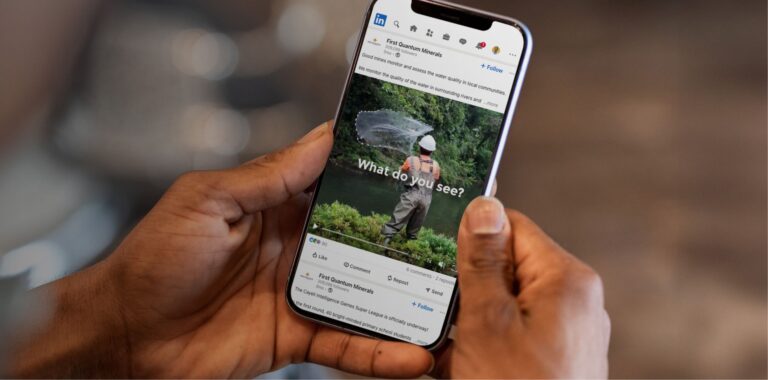Business alignment: Inside sustainability communications

Bladonmore’s David Willans discusses business alignment, adapting to the pace of change and more with Astrid Bosten. Astrid leads sustainability communications globally for Amcor, one of the world’s largest packaging companies. With over three decades in communications, her role is integral to Amcor’s ambition to create innovative and more sustainable packaging solutions.
Thanks for talking, let’s start with what you do, and why sustainability communications is vital to Amcor?
I lead global sustainability communications at Amcor, both internally and externally. Sustainability is central to what we do, so by connecting our sustainability communication efforts to Amcor’s strategic business priorities, we make sure we’re focused on the right things.
How do you connect sustainability communications to strategic business priorities?
The sustainability communication strategy ties into two key areas: our overall company strategy and our sustainability strategy. This way, it aligns, on the one hand, with the broader business strategy and yearly priorities, making sure our messaging supports big-picture goals. On the other, it reflects our sustainability strategy, weaving in key focus areas and commitments. From there, we shape and refine our communications to bring both sides together, showing how sustainability drives business growth, helps us expand into key markets, and fuels innovation in packaging solutions.
What is an example of translating strategic objectives into a sustainability narrative?
Let’s take our sustainability report as an example. We moved beyond treating the report as a pure reporting tool; instead, we see it as a multi-stakeholder communication item that connects strategic objectives, like driving circularity across the packaging industry, with proof points and narratives. Our sustainability report 2024 “Toward a Circular Society” establishes this connection, as we believe that achieving circularity is something everyone must contribute to. For example, companies like Amcor need to transform their portfolios, brand owners need to invest in recyclable, reusable and compostable packaging, consumers need to recycle more, and governments must create the framework to build the infrastructure for it all. Setting that out for our stakeholders positions us in the thought leadership space we want to play in and our work as being a valuable part of this broader change.
What is a sustainability narrative for you?
For me, a narrative simplifies complex topics like sustainability into accessible stories that build trust with audiences. It’s about answering key questions, such as: What is the problem? What is our position? What is our solution? And how are we making progress? All of this is grounded and backed up with data to ensure transparency and trust.
How do you balance internal and external communications?
Both are crucial. Internally, we focus on employee engagement and capability building through regular communications, webinars and toolkits. For example, in our “Sustainability Unpacked” webinar series, we feature speakers and topics across the ESG agenda. Our last session was about how to avoid greenwashing accusations. Externally, we focus on thought leadership, highlighting Amcor’s role in driving sustainability in the packaging industry. Internal alignment and upskilling ensure harmonization of messaging, so that every team member can advocate for our sustainability goals, while external messaging reinforces our leadership position.
Many companies are realizing just how hard sustainability is. What is your advice to those communicating around missed sustainability targets?
Transparency is key. Targets, by nature, are aspirational. If a company falls short, it needs to communicate openly about the progress made, the roadblocks encountered, and the next steps. This builds credibility and trust and shows its commitment to continuous improvement, which is something all stakeholders appreciate and respect.
What are the big changes you’ve seen recently in sustainability communications?
The scope is expanding. Historically, sustainability communications focused on internal operations and primarily on environmental issues like greenhouse gas emissions and environmental pollution. Now, social and governance topics—such as human rights, sustainable procurement and supply chain due diligence—are taking center stage. This breadth means new narratives and greater integration with a business’ core story.
Looking ahead, what is on the horizon for sustainability communications?
Firstly, the volume of regulation is a big one and will increasingly shape companies’ sustainability agendas. For communicators, this means adapting quickly and educating stakeholders to stay aligned with evolving obligations and expectations. Those that don’t keep up, risk appearing outdated, which could negatively impact business.
Secondly, the future will be even more about collaboration. Amcor is part of over 75 global and regional sustainability partnerships and invests a lot in collaborative efforts. These include being part of the Ellen MacArthur Foundation, the Alliance to End Plastic Waste, the Consumer Goods Forum and participating in the Intergovernmental Negotiating Committee on Ending Plastic Pollution. This means Amcor can contribute with its expertise and experience in changing the system.
Do you have any final thoughts?
Sustainability communications isn’t just about storytelling — it’s about creating tangible value by connecting business priorities with sustainability and broader societal goals. Amcor tries to exemplify and foster collaboration across its value chain because it’s the only way to move toward sustainability.
If you’d like help communicating your sustainability work and position, please get in touch.
Share article


